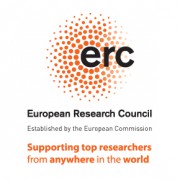Events
TECHNICAL ART HISTORY COLLOQUIUM: Polychromy, 24 January, Amsterdam
Download the full programme here
Date: Thursday 24 January 2019
Time: 16.00 – 17.30
Location: Room B, 1st floor Ateliergebouw, Hobbemastraat 22, Amsterdam
Admission free, but in order to make sure that you will be accommodated, please RSVP to j.briggeman@uu.nl by 18 January.
Chair: Abbie Vandivere (University of Amsterdam, Coordinator MA Technical Art History & Paintings Conservator, Mauritshuis, The Hague)
Evoking the Divine: The Visual Vocabulary of Polychrome Wooden Sculpture in Norway between 1100 and 1350
Kaja Kollandsrud, Conservator of Paintings and Polychrome Sculpture, Museum of Cultural History, University of Oslo
The search for potential meaning embedded in the medieval visual expression involves the precise description of colour and materials identified through analyses, but also moves beyond this: placing the objects within the context of the intellectual religious thinking of the period. The experience invoked by these polychrome sculptures, relate to the human perception of the medieval Christian cosmos. The Book of Genesis presents light as the act from which all else comes into being with Gods first command, fiat lux. Consequently, light is the fundamental revelation of rationality in the universe, and of the nature of God. Its interaction with matter was therefore central to the perception of the material world as a reflection of its creator. This research has examined how mental images created in text are made present in the medieval work of art by navigating between the empirical and the conceptual, through the examination of relevant proto-scientific and theological-philosophical texts, Old Norse and medieval literature.
Light, Polychromy and Sculpture in the Early Sixteenth Century in Utrecht
Aleth Lorne, Conservator of Polychrome Sculptures, Conservation Studio Aleth Lorne
In the small church of Doorn, next to Utrecht, fragmented stone reliefs were found under a floor in 1996. The reliefs were studied within an interdisciplinary project of the Agency for the Dutch Cultural Heritage (Rijksdienst Cultureel Erfgoed). The polychrome fragments appear to be the remains of a monument, elevated in the church around 1530. The study of the paint layers revealed an unusual polychromy. Imitation of materials, trompe l’oeil, painted highlights and shadows as well as changeants in the draperies create an illusion of reality. The highlights and shadows painted on the stone carvings reproduce the natural light falling inside the church. They accentuate the dramatic effects of the represented scenes and contribute to the integration of the Renaissance microarchitecture in the larger Late Gothic architecture of the church. Comparative study of polychrome stone sculptures made in Utrecht shows that several of the painting techniques on the monument in Doorn were already in use at the turn of the 16th century. This emphasizes that the pictorial representation of the lighting on sculptures was part of the stylistic developments that took place during this period in Utrecht.
The Technical Art History Colloquia are organised by Sven Dupré (Utrecht University and University of Amsterdam, PI ERC ARTECHNE), Arjan de Koomen (University of Amsterdam, Coordinator MA Technical Art History), Abbie Vandivere (University of Amsterdam, Coordinator MA Technical Art History & Paintings Conservator, Mauritshuis, The Hague), Erma Hermens (University of Amsterdam and Rijksmuseum) and Ann-Sophie Lehmann (University of Groningen). The Technical Art History Colloquia are a cooperation of the ARTECHNE Project (Utrecht University and University of Amsterdam), the Netherlands Institute for Conservation, Art and Science (NICAS), the University of Amsterdam and the Mauritshuis. The ARTECHNE project has received funding from the European Research Council (ERC) under the European Union’s Horizon 2020 research and innovation programme (grant agreement No 648718).


